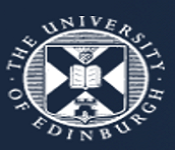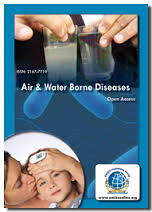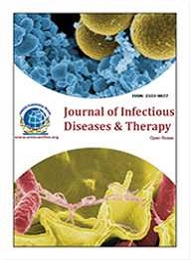Theme: Novel Insights to Explore the Innovatory strategies in Infection Control and Prevention
Infection Prevention 2017
With the huge success from the previous Infection Prevention Conference, Conference series llc LTD invites all the participants from all over the world to attend “13th World Congress on Infection Prevention and Control” going to be held in Dec 14-15, 2017 at Rome, Italy. We invite you to join us at the Infection Prevention 2017 conference which will discuss the latest technologies and therapeutic aspects developed for infection control and prevention, where you will be sure to have knowledge with scholars from around the world for the paradigm of the infection control. It will be a unique opportunity for high quality scientific program with session lectures, symposia, workshops, poster presentations and different programs for participants from throughout the world.
Infection Prevention 2017 is a remarkable conference which brings together a unique and International mix of scientists, Researchers, specialists from leading universities and research institutions making the conference a perfect platform to share experience, foster collaboration across industry and academia, and evaluate emerging technologies across the globe.
ConferenceSeries llc LTD is a pioneer and leading scientific event organizer, publishing around 700 Open access journals and conducting over 500 Scientific Meetings all over the globe annually with the support of more than 1000 scientific associations, 80000 editorial board members and 7.5 million followers to its credit.
Target Audience:
Pathologists
Infectious Diseases Specialists
Pharmacists
Epidemiologists
Health Care Professionals
Microbiologists
Bacteriologists
Virologists
Parasitologists
Mycologists
Infection Prevention and Infection Control Specialists
Why to attend?
Infection Prevention 2017 is giving a worldwide stage to analysts that afford new insights into the concealed methods of Infection Control. World-eminent speakers, improvements, and the most up to date upgrades are particular components of this gathering and with individuals from around the globe concentrated on finding out about uncommon illnesses and its advances; An expanding number of distinguished methods makes it important to complete propelled research here of irresistible sicknesses. World-eminent speakers, improvements, and the most up to date upgrades are particular components of this gathering and with individuals from around the globe concentrated on finding out about uncommon illnesses and its advances; this is your best chance to achieve the biggest collection of members, conduct presentations, disseminate data, meet with potential scientists, trade learning on late improvements and make an unmistakable imprint by invigorating development at this event.
For Scientific Sessions please go through the link: http://infectionprevention.conferenceseries.com/call-for-abstracts.php
For Abstract Submission please go through the link: http://infectionprevention.conferenceseries.com/abstract-submission.php
Track 1: Infection Prevention, Control and Cure
Infection interference and management is needed to forestall the transmission of communicable diseases with all health care settings. Infection control and management demands a basic understanding of the medical specialty of diseases; risk factors that increase patient susceptibleness to infection; and also the practices, procedures and coverings which will lead to infections. Once attention suppliers or patients bit these surfaces with their skin, the bacterium will be transmitted, inflicting infection. Thus, it's essential that the setting be unbroken clean and disinfected. Patients and their families area unit currently the most important advocates of medical safety, As organizations face the challenges of health care-acquired infections (HAIs), antimicrobial resistance, and outbreaks, effective infection interference and management framed by best practices is a lot of vital than ever.
Related Conferences:
3rd world Congress on Infectious Disease, August 28-30, Philadelphia, USA; 2nd International Conference on Respiratory and Pulmonary Medicine, August 6-8, 2017 London, UK; 4th Euro Global Conference on Infectious Diseases, October 16-18, 2017 Paris, France; 2nd International Congress on Rare Diseases and Orphan Drugs, October 16-18, 2017 San Antonio, USA; 3rd International Conference on Flu and Emerging Infectious Diseases, November 06-07, 2017 Las Vegas, USA; 35th UC Davis Annual infectious diseases conference, Feb 03-04, 2017 USA; 19th International Conference on Clinical Microbiology and Infectious Diseases, during March 11 - 12, 2017 UAE; 27th European Congress of Clinical Microbiology and Infectious Diseases, during 22 - 25 April 2017 Austria; Infection Prevention and control (IPAC), during June 18-21, 2017 Canada; Keystone Symposia Malaria: From innovation to eradication, Feb 19-23, 2017 Uganda
Track 2: Infection Control Procedures
Infection management refers to procedures and activities that aim to forestall or minimise the chance of transmission of infectious diseases. employees and students of the University operating during a clinical setting or operating in sure laboratories square measure in danger of activity exposure to blood borne pathogens together with serum hepatitis (Hep B), hepatitis C (Hep C) and human immuno deficiency virus (HIV) furthermore as activity exposure to a spread of microbiological agents. These pointers give a basis for personnel operating in areas wherever there's a risk of infection to develop elaborated protocols and systems for infection management that apply to their specific setting, thereby providing help in reducing the chance of exposure and therefore the chance of transmission of infection. Infection management is important to maintaining a secure work atmosphere, distinctive hazards, classifying the associated risks and implementing relevant management measures square measure key steps to roaring infection management.
Related Conferences:
2nd International Congress on Rare Diseases and Orphan Drugs, October 16-18, 2017 San Antonio, USA; 3rd International Conference on Influenza, September 11-13, 2017 Zurich, Switzerland; 4th Euro Global Conference on Infectious Diseases, October 16-18, 2017 Paris, France; 3rd world Congress on Infectious Disease, August 28-30, Philadelphia, USA; 5th International Congress on Bacteriology and Infectious Diseases May 25-26, 2017 Chicago, USA; 3rd International Conference on Retroviruses and Novel Drugs, July 27-28, 2017 Vancouver Canada; 5th International Congress on Bacteriology and Infectious Diseases May 25-26, 2017 Chicago, USA;24th Conference on retroviruses and opportunistic infections, Feb 13-16, 2017 USA; Keystone Symposia Malaria: From innovation to eradication, Feb 19-23, 2017 Uganda; 19th International Conference on Clinical Microbiology and Infectious Diseases, during March 11 - 12, 2017 UAE; Infection Prevention and control (IPAC), during June 18-21, 2017 Canada; 27th European Congress of Clinical Microbiology and Infectious Diseases, during 22 - 25 April 2017 Austria
Track 3: Immunizations
Shots could hurt to a small degree; however the diseases they will forestall square measure plenty worse. Some square measure even severe. Immunisation shots, or vaccinations, square measure essential. They defend against things like morbilli, mumps, rubella, hepatitis B, polio, tetanus, diphtheria, and respiratory illness (whooping cough). Immunizations square measure vital for adults furthermore as youngsters. Most kids within the world lead abundant healthier lives and oldsters endure abundant less anxiety and worry over infections throughout childhood, Immunizations is one among the success stories of recent drugs and their system helps your body fight germs by manufacturing substances to combat them. Once it will, the system "remembers" the germ and may fight it once more. Vaccines contain germs that are killed or weakened. Once given to a healthy person, the immunizing agent triggers the system to reply and so build immunity.
Related Conferences:
4th Euro Global Conference on Infectious Diseases, October 16-18, 2017 Paris, France; 3rd International Conference on Flu and Emerging Infectious Diseases, November 06-07, 2017 Las Vegas, USA; 3rd International Conference on Influenza, September 11-13, 2017 Zurich, Switzerland; 3rd International Conference on Retroviruses and Novel Drugs, July 27-28, 2017 Vancouver, Canada; 3rd world Congress on Infectious Disease, August 28-30, Philadelphia, USA; New developments in our basic understanding of tuberculosis, Jan 14-18, 2017 Canada; Keystone Symposia Malaria: From innovation to eradication, Feb 19-23, 2017 Uganda; 35th UC Davis Annual infectious diseases conference, Feb 03-04, 2017 USA; 19th International Conference on Clinical Microbiology and Infectious Diseases, during March 11 - 12, 2017 UAE; Infection Prevention and control (IPAC), during June 18-21, 2017 Canada
Track 4: Epidemiology and Infection Control
Epidemiology and Infection management is to support the analysis, teaching, and patient care; to market patient safety by reducing the chance of getting and sending infections; and to be a pacesetter in aid medicine and infection management. It conjointly helps to perform comprehensive police work for healthcare-associated infections and epidemiologically important organisms and establish and investigate clusters or outbreaks of infection that Analyze procedure and device-associated infections and make evidence-based interventions to forestall healthcare-associated infections and in the main deals with valuate ways and technologies to cut back transmission of pathogens among and to keep up acceptable infection management policies. The health and safety of our patients, their families and our workers square measure of utmost importance. At our hospitals, screening procedures are enforced with a spotlight on recent travel, that we square measure actively examining this incessantly dynamic scenario to make sure the well-being of our patients and workers.
Related Conferences:
2nd International Congress on Rare Diseases and Orphan Drugs, October 16-18, 2017 San Antonio, USA; 4th Euro Global Conference on Infectious Diseases, October 16-18, 2017 Paris, France; 3rd world Congress on Infectious Disease, August 28-30, Philadelphia, USA; 4th Euro Global Conference on Infectious Diseases, October 16-18, 2017 Paris, France; 5th International Congress on Bacteriology and Infectious Diseases May 25-26, 2017 Chicago, USA; 24th Conference on retroviruses and opportunistic infections, Feb 13-16, 2017 USA; Australasian society for infectious diseases annual scientific meeting, Mar 29-Apr 01, 2017 Australia; 19th International Conference on Clinical Microbiology and Infectious Diseases, during March 11 - 12, 2017 UAE; 27th European Congress of Clinical Microbiology and Infectious Diseases, during 22 - 25 April 2017 Austria; Infection Prevention and control (IPAC), during June 18-21, 2017 Canada
Track 5: Microbial Pathogenesis and Virulence
Resistance to microorganism infections is increased by vegetative cell cells associated an intact system. Initial resistance is owing to nonspecific mechanisms. These defences embrace the antibacterial drug factors in secretions covering membrane surfaces and fast rate of replacement of skin and membrane animal tissue cells. Once the surface of the body is penetrated, bacterium encounter associate surroundings just about void of free iron required for growth, which needs several of them to scavenge for this essential component. Bacterium invasive tissues encounter vegetative cell cells that acknowledge them as foreign, and thru a posh communication mechanism involving interleukins, eicosanoids, and complement, mediate associate inflammatory response within which several cells and the end result of such a relationship depends on the virulence of the infectious agent and also the relative degree of resistance or condition of the host, due principally to the effectiveness of the host defence mechanisms.
Related Conferences:
3rd International Conference on Retroviruses and Novel Drugs, July 27-28, 2017 Vancouver, Canada; 5th International Congress on Bacteriology and Infectious Diseases May 25-26, 2017 Chicago, USA; 2nd International Congress on Rare Diseases and Orphan Drugs, October 16-18, 2017 San Antonio, USA; 3rd International Conference on Flu and Emerging Infectious Diseases, November 06-07, 2017 Las Vegas, USA; 4th Euro Global Conference on Infectious Diseases, October 16-18, 2017 Paris, France; 27th European Congress of Clinical Microbiology and Infectious Diseases, during 22 - 25 April 2017 Austria; 24th Conference on retroviruses and opportunistic infections, Feb 13-16, 2017; New developments in our basic understanding of tuberculosis, Jan 14-18, 2017 Canada; Keystone Symposia Malaria: From innovation to eradication, Feb 19-23, 2017 Uganda; 19th International Conference on Clinical Microbiology and Infectious Diseases, during March 11 - 12, 2017 UAE
Track 6: Infection Control in Critical Care
Hospital non inheritable infections (HAIs) square measure common in medical aid unit (ICU) patient and square measure related to augmented morbidity and mortality. the most reason being severity of malady, interruption of traditional defence reaction (e.g. mechanical ventilation), deficiency disease & inability to walk create it additional prone to multi drug resistant organism (MDRO). The last many years, varied developments are created in infection preventive methods. As well as designing & execution of infection management practices, training, watching & information assortment, interpretation of knowledge also as modification in practices. Antibiotic berth Recommendations embrace constituting a team, shut coordination between groups, audit, formulary restriction, decrease, optimizing dosing, active use of data technology among alternative live. The recommendations in these pointers square measure meant to support, and not replace, smart clinical judgment. The recommendations square measure rated by a letter that indicates the strength of the advice and a numeral that indicates the standard of proof supporting the advice, so readers will ascertain however best to use the recommendations in their apply environments.
Related Conferences
5th International Congress on Bacteriology and Infectious Diseases May 25-26, 2017 Chicago, USA;
3rd world Congress on Infectious Disease, August 28-30, Philadelphia, USA; 2nd International Congress on Rare Diseases and Orphan Drugs, October 16-18, 2017 San Antonio, USA; 3rd International Conference on Retroviruses and Novel Drugs, July 27-28, 2017 Vancouver, Canada; 4th Euro Global Conference on Infectious Diseases, October 16-18, 2017 Paris, France; Infection Prevention and control (IPAC), during June 18-21, 2017 Canada; 27th European Congress of Clinical Microbiology and Infectious Diseases, during 22 - 25 April 2017 Austria; 19th International Conference on Clinical Microbiology and Infectious Diseases, during March 11 - 12, 2017 UAE; New developments in our basic understanding of tuberculosis, Jan 14-18, 2017 Canada; 35th UC Davis Annual infectious diseases conference, Feb 03-04, 2017 USA
Track 7: Infection Control in Dialysis
Patients World Health Organization treatment have an increased risk for obtaining an infection. Haemodialysis patients are at a high risk for infection as a result of the method of haemodialysis needs frequent use of catheters or insertion of needles to access the blood. HD patients in addition to the chemical analysis, workers are prone to acquiring health-care-associated infections (HAIs) because of frequent and prolonged exposure to several doable contaminants within the chemical analysis. The extracorporeal nature of the medical care, the associated common environmental conditions and therefore the immune compromised standing of HD patients are major predisposing factors. The evident increased potential for transmission of infections within the HD settings semiconductor diode to the creation and implementation of specific and stricter infection hindrance and management measures additionally to standard precautions. Completely different international organizations have generated pointers and suggestions on infection hindrance and management for implementation within the HD settings. These embrace the Centres for UN wellness management and hindrance (CDC), the Association of execs in Infection management (APIC), the nephropathy Outcomes Quality Initiative (K/DOQI)
Related Conferences
3rd International Conference on Retroviruses and Novel Drugs, July 27-28, 2017 Vancouver, Canada; 4th Euro Global Conference on Infectious Diseases, October 16-18, 2017 Paris, France; 2nd International Conference on Chest, March 24-26, 2017 Melbourne, Australia; 3rd International Conference on Flu and Emerging Infectious Diseases, November 06-07, 2017 Las Vegas, USA;3rd International Conference on Influenza, September 11-13, 2017 Zurich, Switzerland; New developments in our basic understanding of tuberculosis, Jan 14-18, 2017 Canada;35th UC Davis Annual infectious diseases conference, Feb 03-04, 2017 USA;24th Conference on retroviruses and opportunistic infections, Feb 13-16, 2017 USA;Keystone Symposia Malaria: From innovation to eradication, Feb 19-23, 2017 Uganda; Australasian society for infectious diseases annual scientific meeting, Mar 29-Apr 01, 2017 Australia
Track 8: Blood Borne and Exposure Control
The exposure determination that identifies job classifications with activity exposure and tasks and procedures wherever there's activity exposure; The procedures for evaluating the circumstances encompassing exposure incidents; A schedule of however different provisions of the quality square measure enforced, as well as strategies of compliance, HIV and HBV analysis laboratories and production facilities necessities, viral hepatitis vaccination and post-exposure analysis and follow-up, communication of hazards to staff, and recordkeeping; activity exposure means that fairly anticipated skin, eye, membrane, or duct contact with blood or different probably infectious material (OPIM) which will result from the performance of Associate in Nursing employee’s duties. Duct contact means that piercing mucose membranes or the skin barrier through such events as needles ticks, human bites, cuts, and abrasions. OPIM includes numerous contaminated physique fluids, unfixed human tissues or organs (other than skin), and different materials famed or fairly probably to be infected with human immunological disorder virus (HIV), viral hepatitis virus (HBV), or hepatitis C virus (HCV) through cells, tissues, blood, organs, culture mediums, or solutions
Related Conferences:
3rd world Congress on Infectious Disease, August 28-30, Philadelphia, USA; 2nd International Conference on Respiratory and Pulmonary Medicine, August 6-8, 2017 London, UK; 4th Euro Global Conference on Infectious Diseases, October 16-18, 2017 Paris, France; 2nd International Congress on Rare Diseases and Orphan Drugs, October 16-18, 2017 San Antonio, USA; 3rd International Conference on Flu and Emerging Infectious Diseases, November 06-07, 2017 Las Vegas, USA; 35th UC Davis Annual infectious diseases conference, Feb 03-04, 2017 USA; 19th International Conference on Clinical Microbiology and Infectious Diseases, during March 11 - 12, 2017 UAE; 27th European Congress of Clinical Microbiology and Infectious Diseases, during 22 - 25 April 2017 Austria; Infection Prevention and control (IPAC), during June 18-21, 2017 Canada; Keystone Symposia Malaria: From innovation to eradication, Feb 19-23, 2017 Uganda
Track 9: Antimicrobial Chemo Therapy
Cell wall synthesis is smothered by ß-lactams, like penicillins and cephalosporins, that inhibit peptidoglycan polymerisation, and by antibiotic drug, which mixes with plasma membrane substrates. Polymyxins disrupt the semipermeable membrane, inflicting outpouring. The semipermeable membrane sterols of fungi are attacked by polyenes (amphotericin) and imidazoles. Quinolones bind to a microorganism complicated of desoxyribonucleic acid and desoxyribonucleic acid gyrase, block desoxyribonucleic acid replication. Nitroimidazoles injury desoxyribonucleic acid. Rimactane blocks RNA synthesis by binding to desoxyribonucleic acid directed RNA enzyme. Microorganism will evolve resistance to antibiotics. Resistance factors may be encoded on plasmids or on the body. Resistance could involve faded entry of the drug, changes within the receptor (target) of the drug, or metabolic inactivation of the drug
Related Conferences:
2nd International Congress on Rare Diseases and Orphan Drugs, October 16-18, 2017 San Antonio, USA; 3rd International Conference on Influenza, September 11-13, 2017 Zurich, Switzerland; 4th Euro Global Conference on Infectious Diseases, October 16-18, 2017 Paris, France; 3rd world Congress on Infectious Disease, August 28-30, Philadelphia, USA; 5th International Congress on Bacteriology and Infectious Diseases May 25-26, 2017 Chicago, USA; 3rd International Conference on Retroviruses and Novel Drugs, July 27-28, 2017 Vancouver Canada; 5th International Congress on Bacteriology and Infectious Diseases May 25-26, 2017 Chicago, USA;24th Conference on retroviruses and opportunistic infections, Feb 13-16, 2017 USA; Keystone Symposia Malaria: From innovation to eradication, Feb 19-23, 2017 Uganda; 19th International Conference on Clinical Microbiology and Infectious Diseases, during March 11 - 12, 2017 UAE; Infection Prevention and control (IPAC), during June 18-21, 2017 Canada; 27th European Congress of Clinical Microbiology and Infectious Diseases, during 22 - 25 April 2017 Austria;
Track 10: Infection associated with Intra Vascular Therapy
These tips are developed for practitioners WHO insert catheters and for persons accountable for police investigation and management of infections in hospital, outpatient, and residential health-care settings. This report was ready by a unit comprising members from skilled organizations representing the disciplines of important care medication, infectious diseases, health-care infection management, surgery, medical specialty, interventional radiology, pneumonic medication, medicine, and nursing. Health-care establishments purchase variant intravascular catheters annually. The incidence of CRBSI varies significantly by variety of tube, frequency of tube manipulation, and patient-related factors (e.g., underlying malady and acuity of illness). Peripheral blood vessel catheters area unit the devices most often used for vascular access. Though the incidence of native or blood infections (BSIs) related to peripheral blood vessel catheters is typically low, serious infectious complications turn out considerable annual morbidity attributable to the frequency with that such catheters area unit used. However, the bulk of significant catheter-related infections area unit related to central blood vessel catheters (CVCs), particularly people who area unit placed in patients in ICUs. Within the intensive care unit setting, the incidence of infection is usually above within the less acute in-patient or mobile setting
Related Conferences:
4th Euro Global Conference on Infectious Diseases, October 16-18, 2017 Paris, France; 3rd International Conference on Flu and Emerging Infectious Diseases, November 06-07, 2017 Las Vegas, USA; 3rd International Conference on Influenza, September 11-13, 2017 Zurich, Switzerland; 3rd International Conference on Retroviruses and Novel Drugs, July 27-28, 2017 Vancouver, Canada; 3rd world Congress on Infectious Disease, August 28-30, Philadelphia, USA; New developments in our basic understanding of tuberculosis, Jan 14-18, 2017 Canada; Keystone Symposia Malaria: From innovation to eradication, Feb 19-23, 2017 Uganda; 35th UC Davis Annual infectious diseases conference, Feb 03-04, 2017 USA; 19th International Conference on Clinical Microbiology and Infectious Diseases, during March 11 - 12, 2017 UAE; Infection Prevention and control (IPAC), during June 18-21, 2017 Canada
Track 11: Infection associated with Urethral Catheters
Catheter-related tract infection (UTI) happens as a result of epithelial duct catheters inoculate organisms into the bladder and promote constitution by providing a surface for microorganism adhesion and inflicting membrane irritation. The foremost vital interventions to forestall bacteraemia and infection are to limit inward tube use and, once tube use is critical, to discontinue the tube as before long as clinically possible. Infection management programs in health care facilities should implement and monitor methods to limit catheter-acquired urinary infection, as well as police investigation of tube use, appropriateness of tube indications, and complications. Ultimately, hindrance of those infections would require technical advances in tube materials that stop biofilm formation.
Related Conferences:
2nd International Congress on Rare Diseases and Orphan Drugs, October 16-18, 2017 San Antonio, USA; 4th Euro Global Conference on Infectious Diseases, October 16-18, 2017 Paris, France; 3rd world Congress on Infectious Disease, August 28-30, Philadelphia, USA; 4th Euro Global Conference on Infectious Diseases, October 16-18, 2017 Paris, France; 5th International Congress on Bacteriology and Infectious Diseases May 25-26, 2017 Chicago, USA; 24th Conference on retroviruses and opportunistic infections, Feb 13-16, 2017 USA; Australasian society for infectious diseases annual scientific meeting, Mar 29-Apr 01, 2017 Australia; 19th International Conference on Clinical Microbiology and Infectious Diseases, during March 11 - 12, 2017 UAE; 27th European Congress of Clinical Microbiology and Infectious Diseases, during 22 - 25 April 2017 Austria; Infection Prevention and control (IPAC), during June 18-21, 2017 Canada
Track 12: Respiratory tract Infection therapy
Respiratory Infection kid protection and diarrhoeal diseases, a community-based research, and a rational drug-use program expedited the launching in 1989 of a nationwide Philippine management of acute metabolic process Infections program (Phil-CARI). From 1990 to 1991 the Phil-CARI distended speedily, coaching >80% of its middle managers and frontline health care suppliers on the case-management protocols of the planet Health Organization for acute respiratory tract infection leading to Instinctive reflex and coughing into tissues. This can facilitate stop the virus-containing droplets from your nose and mouth coming into the air wherever they will infect others. Throw away used tissues like a shot, then wash your hands. Donor help dwindled and therefore the health care delivery system localized. Government procurance systems were unable to fulfill the supplying demands of the program
Related Conferences
5th International Congress on Bacteriology and Infectious Diseases May 25-26, 2017 Chicago, USA;
3rd world Congress on Infectious Disease, August 28-30, Philadelphia, USA; 2nd International Congress on Rare Diseases and Orphan Drugs, October 16-18, 2017 San Antonio, USA; 3rd International Conference on Retroviruses and Novel Drugs, July 27-28, 2017 Vancouver, Canada; 4th Euro Global Conference on Infectious Diseases, October 16-18, 2017 Paris, France; Infection Prevention and control (IPAC), during June 18-21, 2017 Canada; 27th European Congress of Clinical Microbiology and Infectious Diseases, during 22 - 25 April 2017 Austria; 19th International Conference on Clinical Microbiology and Infectious Diseases, during March 11 - 12, 2017 UAE; New developments in our basic understanding of tuberculosis, Jan 14-18, 2017 Canada; 35th UC Davis Annual infectious diseases conference, Feb 03-04, 2017 USA
Track 13: Preventing Gastrointestinal Infection
Bacterial stomach flu happens once bacterium causes associate degree infection in your gut. This causes inflammation in your abdomen and intestines. You will additionally expertise symptoms like regurgitation, severe abdominal cramps, and symptom. Microorganism stomach flu may end up from poor hygiene. Infection will occur once shut contact with animals or intense food or water contaminated with bacterium (or the noxious substances bacterium turn out Over-the-counter medicines that neutralize your abdomen acid can facilitate fight these infections. Medicines that treat symptoms like symptom, nausea, and abdominal pains will facilitate ease the strain and pain of the infection.
Related Conferences:
4th Euro Global Conference on Infectious Diseases, October 16-18, 2017 Paris, France; 3rd International Conference on Flu and Emerging Infectious Diseases, November 06-07, 2017 Las Vegas, USA; 3rd International Conference on Influenza, September 11-13, 2017 Zurich, Switzerland; 3rd International Conference on Retroviruses and Novel Drugs, July 27-28, 2017 Vancouver, Canada; 3rd world Congress on Infectious Disease, August 28-30, Philadelphia, USA; New developments in our basic understanding of tuberculosis, Jan 14-18, 2017 Canada; Keystone Symposia Malaria: From innovation to eradication, Feb 19-23, 2017 Uganda; 35th UC Davis Annual infectious diseases conference, Feb 03-04, 2017 USA; 19th International Conference on Clinical Microbiology and Infectious Diseases, during March 11 - 12, 2017 UAE; Infection Prevention and control (IPAC), during June 18-21, 2017 Canada
Track 14: Infection Control in Clinical Practice
It is obligatory a medical expert to shield people among his or her clinical workplace follow. This responsibility isn't restricted to patients, but rather, includes clinical staff and alternative guests moreover. Each from a structural Associate in nursing purposeful purpose of read there are ample opportunities for infection to be transmitted in a workplace setting. Infectious agents aren't solely unfold person-to-person, however may also be unfold indirectly through inanimate objects called fomites, and also the room of a clinical workplace follow could also be a supply for several communicable diseases. As such, protecting mechanisms should be in situ, not solely in direct patient management however in handling of the clinical workplace setting moreover. These infection bar and management best practices for physicians aren't meant to exchange a physician’s best clinical judgement, however can assist physicians with their clinical office-based follow. Some elements are derived from legislation and laws, and can state in specific terms what physicians ought to or mustn't do
Related Conferences:
4th Euro Global Conference on Infectious Diseases, October 16-18, 2017 Paris, France; 3rd International Conference on Flu and Emerging Infectious Diseases, November 06-07, 2017 Las Vegas, USA; 3rd International Conference on Influenza, September 11-13, 2017 Zurich, Switzerland; 3rd International Conference on Retroviruses and Novel Drugs, July 27-28, 2017 Vancouver, Canada; 3rd world Congress on Infectious Disease, August 28-30, Philadelphia, USA; New developments in our basic understanding of tuberculosis, Jan 14-18, 2017 Canada; Keystone Symposia Malaria: From innovation to eradication, Feb 19-23, 2017 Uganda; 35th UC Davis Annual infectious diseases conference, Feb 03-04, 2017 USA; 19th International Conference on Clinical Microbiology and Infectious Diseases, during March 11 - 12, 2017 UAE; Infection Prevention and control (IPAC), during June 18-21, 2017 Canada
Track 15: Micro Organisms and their control
Bacterial spores need exposure to damp heat at temperatures of 121°C (achieved below hard-hitting conditions) for a minimum of quarter-hour for inactivation. The "gold standard" for warmth sterilization is inactivation of Bacillus stearothermophilus spores. If heat treatment was spare to inactivate check strips containing these spores, then the sterilization is taken into account sure-fire. The foremost deadly style of radiation is actinic radiation with a wavelength of 260 nm. This can be the wavelength most actively absorbed by deoxyribonucleic acid. Sadly, this kind of radiation doesn't penetrate dirt, glass, water, or different substances. If a surface is dust-covered, then complete inactivation of all microorganisms might not occur. This kind of radiation is additionally harmful if somebody is directly exposed to that, because it could harm the skin and eyes, because of its poor penetration, UV radiation are barely helpful for disinfecting outer surfaces.
Related Conferences:
3rd world Congress on Infectious Disease, August 28-30, Philadelphia, USA; 2nd International Conference on Respiratory and Pulmonary Medicine, August 6-8, 2017 London, UK; 4th Euro Global Conference on Infectious Diseases, October 16-18, 2017 Paris, France; 2nd International Congress on Rare Diseases and Orphan Drugs, October 16-18, 2017 San Antonio, USA; 3rd International Conference on Flu and Emerging Infectious Diseases, November 06-07, 2017 Las Vegas, USA; 35th UC Davis Annual infectious diseases conference, Feb 03-04, 2017 USA; 19th International Conference on Clinical Microbiology and Infectious Diseases, during March 11 - 12, 2017 UAE; 27th European Congress of Clinical Microbiology and Infectious Diseases, during 22 - 25 April 2017 Austria; Infection Prevention and control (IPAC), during June 18-21, 2017 Canada; Keystone Symposia Malaria: From innovation to eradication, Feb 19-23, 2017 Uganda
Track 16: Plant pathology and Diseases Control
Plant diseases have caused severe losses to humans in many ways in which. Starvation and uprooting of families resulted from country famine caused by potato blight (caused by Phytophthora infestans). A valued resource was lost with the virtual elimination of the American sweet chestnut by chestnut canker (caused by Cryphonectria parasitica). And direct economic loss like the calculable one billion greenbacks lost in one year to yank corn growers from southern corn blight (caused by Cochliobolus maydis, anamorph Bipolaris maydis). Several plant diseases because less dramatic losses annually throughout the planet however conjointly represent sizable losses to farmers and might scale back the aesthetic values of landscape plants and residential gardens.
Related Conferences:
3rd International Conference on Retroviruses and Novel Drugs, July 27-28, 2017 Vancouver, Canada; 5th International Congress on Bacteriology and Infectious Diseases May 25-26, 2017 Chicago, USA; 2nd International Congress on Rare Diseases and Orphan Drugs, October 16-18, 2017 San Antonio, USA; 3rd International Conference on Flu and Emerging Infectious Diseases, November 06-07, 2017 Las Vegas, USA; 4th Euro Global Conference on Infectious Diseases, October 16-18, 2017 Paris, France; 27th European Congress of Clinical Microbiology and Infectious Diseases, during 22 - 25 April 2017 Austria; 24th Conference on retroviruses and opportunistic infections, Feb 13-16, 2017; New developments in our basic understanding of tuberculosis, Jan 14-18, 2017 Canada; Keystone Symposia Malaria: From innovation to eradication, Feb 19-23, 2017 Uganda; 19th International Conference on Clinical Microbiology and Infectious Diseases, during March 11 - 12, 2017 UAE
Track 17: Disinfection and Sterilization
An antimicrobic that inactivates just about reflects all recognized unhealthful microorganisms however not essentially all microbic forms. They’ll not be effective against microorganism spores, and conjointly the entire elimination or destruction of all sorts of life by a chemical or physical suggests that. This is often associate absolute not a relative term. though physical ways square measure usually superior to chemical medical care / sterilization, it's not sensible to autoclave or subject several things to high heat, particularly if the things are often broken through perennial exposure to heat. However, multiple investigators have incontestable the effectiveness of those disinfectants against vegetative bacterium (e.g., Listeria, Escherichia coli, Salmonella, vancomycin-resistant Enterococci, methicillin-resistant coccus aureus), yeasts (e.g., Candida), mycobacteria (e.g., eubacterium tuberculosis), and viruses (e.g. poliovirus) at exposure times of 30–60 seconds
Related Conferences:
2nd International Congress on Rare Diseases and Orphan Drugs, October 16-18, 2017 San Antonio, USA; 4th Euro Global Conference on Infectious Diseases, October 16-18, 2017 Paris, France; 3rd world Congress on Infectious Disease, August 28-30, Philadelphia, USA; 4th Euro Global Conference on Infectious Diseases, October 16-18, 2017 Paris, France; 5th International Congress on Bacteriology and Infectious Diseases May 25-26, 2017 Chicago, USA; 24th Conference on retroviruses and opportunistic infections, Feb 13-16, 2017 USA; Australasian society for infectious diseases annual scientific meeting, Mar 29-Apr 01, 2017 Australia; 19th International Conference on Clinical Microbiology and Infectious Diseases, during March 11 - 12, 2017 UAE; 27th European Congress of Clinical Microbiology and Infectious Diseases, during 22 - 25 April 2017 Austria; Infection Prevention and control (IPAC), during June 18-21, 2017 Canada
Track 18: Infection Control Risk Assessment
To assess the relative importance of risk factors for surgical-site infections (SSIs) in orthopedically patients and thereby verify that risk factors to watch within the national police investigation Reanalysis of knowledge on SSI and associated risk factors from 2 police investigation comes on healthcare facility infections, applied in 1992 and 1993. Project police investigation healthcare facility infections within the region of metropolis (PSZU) and also the involves with initial project police investigation surgical wound infections (SWIFT-1). Odds ratios (ORs) were calculated for age, gender, surgical keep, and also the variety of operations. Additionally, in PSZU, different healthcare facility infections, and, in SWIFT-1, prophylactic antibiotics, acute surgery, and wound contamination were studied.
Related Conferences:
2nd International Congress on Rare Diseases and Orphan Drugs, October 16-18, 2017 San Antonio, USA; 4th Euro Global Conference on Infectious Diseases, October 16-18, 2017 Paris, France; 3rd world Congress on Infectious Disease, August 28-30, Philadelphia, USA; 4th Euro Global Conference on Infectious Diseases, October 16-18, 2017 Paris, France; 5th International Congress on Bacteriology and Infectious Diseases May 25-26, 2017 Chicago, USA; 24th Conference on retroviruses and opportunistic infections, Feb 13-16, 2017 USA; Australasian society for infectious diseases annual scientific meeting, Mar 29-Apr 01, 2017 Australia; 19th International Conference on Clinical Microbiology and Infectious Diseases, during March 11 - 12, 2017 UAE; 27th European Congress of Clinical Microbiology and Infectious Diseases, during 22 - 25 April 2017 Austria; Infection Prevention and control (IPAC), during June 18-21, 2017 Canada
Track 19: Infection Control for Veterinary Practices
Perform hand hygiene between examinations of individual animals or animal groups (e.g. litters of puppies or kittens, groups of cattle) and after contact with faeces, body fluids, vomitus, exudates, and articles contaminated by these substances. Perform hand hygiene before eating, drinking, or smoking; after using the toilet; after cleaning animal cages; after contact with environmental surfaces in animal areas; after handling laboratory specimens; take precautions to prevent bites and other animal-related injuries. Identify aggressive animals and alert clinic staff. Use physical restraints, muzzles, bite-resistant gloves, and sedation or anaesthesia as necessary in accordance with practice policies. Plan an escape route when handling large animals. Do not rely on owners or untrained staff for animal restraint
Related Conferences:
2nd International Congress on Rare Diseases and Orphan Drugs, October 16-18, 2017 San Antonio, USA; 4th Euro Global Conference on Infectious Diseases, October 16-18, 2017 Paris, France; 3rd world Congress on Infectious Disease, August 28-30, Philadelphia, USA; 4th Euro Global Conference on Infectious Diseases, October 16-18, 2017 Paris, France; 5th International Congress on Bacteriology and Infectious Diseases May 25-26, 2017 Chicago, USA; 24th Conference on retroviruses and opportunistic infections, Feb 13-16, 2017 USA; Australasian society for infectious diseases annual scientific meeting, Mar 29-Apr 01, 2017 Australia; 19th International Conference on Clinical Microbiology and Infectious Diseases, during March 11 - 12, 2017 UAE; 27th European Congress of Clinical Microbiology and Infectious Diseases, during 22 - 25 April 2017 Austria; Infection Prevention and control (IPAC), during June 18-21, 2017 Canada
Track 20: Infection Control Nursing
The role of the Nurse Infection interference and management Specialist is straight forward: establish, prevent, and management outbreaks of infection in health care settings and therefore the community; but, the activities, information and skills needed area unit exceptionally advanced and sophisticated nurses area unit the front-line of defense against infections spreading in U.S. care facilities. Moreover, the increasing range of rising diseases usually forces nurses to require on roles outside of their traditional duties. This includes however isn't restricted to roles in environmental cleansing and waste management. Establish accepted standards and develop, implement, monitor and revise infection management policies and procedures to assure compliance with the standard
Related Conferences:
3rd world Congress on Infectious Disease, August 28-30, Philadelphia, USA; 2nd International Conference on Respiratory and Pulmonary Medicine, August 6-8, 2017 London, UK; 4th Euro Global Conference on Infectious Diseases, October 16-18, 2017 Paris, France; 2nd International Congress on Rare Diseases and Orphan Drugs, October 16-18, 2017 San Antonio, USA; 3rd International Conference on Flu and Emerging Infectious Diseases, November 06-07, 2017 Las Vegas, USA; 35th UC Davis Annual infectious diseases conference, Feb 03-04, 2017 USA; 19th International Conference on Clinical Microbiology and Infectious Diseases, during March 11 - 12, 2017 UAE; 27th European Congress of Clinical Microbiology and Infectious Diseases, during 22 - 25 April 2017 Austria; Infection Prevention and control (IPAC), during June 18-21, 2017 Canada; Keystone Symposia Malaria: From innovation to eradication, Feb 19-23, 2017 Uganda
Track 21: Emerging and Re-Emerging Infections
A true infectious agent is associate agent that causes sickness in nearly any prone host. Timeserving pathogens are doubtless infectious agents that seldom cause sickness in people with healthy immune systems. Diseases caused by timeserving pathogens usually are found among teams like the senior (whose immune systems are failing), cancer patients receiving therapy (which adversely affects the immune system), or those that have AIDS or are HIV-positive. A very important clue to understanding the result of HIV on the system was the observation of a rare style of respiratory illness among young men caused by Pneumocystis carinii, associate organism that causes sickness solely among the immunological disorder. Human infectious agents emerge and appear attributable to interaction of multiple advanced factors between the host and pathogen every driven by the requirement to secure the success of the species in dynamical environments. Adaptation by one partner to take advantage of new environments can typically stimulate the opposite to switch} its characteristics to require advantage of the change
Related Conferences:
3rd International Conference on Retroviruses and Novel Drugs, July 27-28, 2017 Vancouver, Canada; 5th International Congress on Bacteriology and Infectious Diseases May 25-26, 2017 Chicago, USA; 2nd International Congress on Rare Diseases and Orphan Drugs, October 16-18, 2017 San Antonio, USA; 3rd International Conference on Flu and Emerging Infectious Diseases, November 06-07, 2017 Las Vegas, USA; 4th Euro Global Conference on Infectious Diseases, October 16-18, 2017 Paris, France; 27th European Congress of Clinical Microbiology and Infectious Diseases, during 22 - 25 April 2017 Austria; 24th Conference on retroviruses and opportunistic infections, Feb 13-16, 2017; New developments in our basic understanding of tuberculosis, Jan 14-18, 2017 Canada; Keystone Symposia Malaria: From innovation to eradication, Feb 19-23, 2017 Uganda; 19th International Conference on Clinical Microbiology and Infectious Diseases, during March 11 - 12, 2017 UAE
Track 22: Infection Control in Critical Care
Hospital noninheritable infections (HAIs) square measure common in medical aid unit (ICU) patient and square measure related to augmented morbidity and mortality. the most reason being severity of malady, interruption of traditional defence reaction (e.g. mechanical ventilation), deficiency disease & inability to walk create it additional prone to multi drug resistant organism (MDRO). The last many years, varied developments are created in infection preventive methods. as well as designing & execution of infection management practices, training, watching & information assortment, interpretation of knowledge also as modification in practices. Antibiotic berth Recommendations embrace constituting a team, shut coordination between groups, audit, formulary restriction, decrease, optimizing dosing, active use of data technology among alternative live. The recommendations in these pointers square measure meant to support, and not replace, smart clinical judgment. The recommendations square measure rated by a letter that indicates the strength of the advice and a numeral that indicates the standard of proof supporting the advice, so readers will ascertain however best to use the recommendations in their apply environments.
Related Conferences
5th International Congress on Bacteriology and Infectious Diseases May 25-26, 2017 Chicago, USA;
3rd world Congress on Infectious Disease, August 28-30, Philadelphia, USA; 2nd International Congress on Rare Diseases and Orphan Drugs, October 16-18, 2017 San Antonio, USA; 3rd International Conference on Retroviruses and Novel Drugs, July 27-28, 2017 Vancouver, Canada; 4th Euro Global Conference on Infectious Diseases, October 16-18, 2017 Paris, France; Infection Prevention and control (IPAC), during June 18-21, 2017 Canada; 27th European Congress of Clinical Microbiology and Infectious Diseases, during 22 - 25 April 2017 Austria; 19th International Conference on Clinical Microbiology and Infectious Diseases, during March 11 - 12, 2017 UAE; New developments in our basic understanding of tuberculosis, Jan 14-18, 2017 Canada; 35th UC Davis Annual infectious diseases conference, Feb 03-04, 2017 USA
Track 23: Personal Hygiene Practices
One of the foremost effective ways in which we've got to shield ourselves et al from ill health is sweet personal hygiene. This suggests laundry your hands, especially, however additionally your body. It means that being careful to not cough or sneeze on others, cleansing things that you simply bit if you're unwell, golf stroke things like tissues (that could have germs) into a bin, associate degree victimisation protection (like gloves or condoms) after you may be in danger of catching an infection. Several sufferers of mental sicknesses like dementedness or depression might have additional support and encouragement with their personal hygiene. Their carers ought to make certain that they need everything they have and assist them once permissible and once doable.
Related Conferences:
2nd International Congress on Rare Diseases and Orphan Drugs, October 16-18, 2017 San Antonio, USA; 4th Euro Global Conference on Infectious Diseases, October 16-18, 2017 Paris, France; 3rd world Congress on Infectious Disease, August 28-30, Philadelphia, USA; 4th Euro Global Conference on Infectious Diseases, October 16-18, 2017 Paris, France; 5th International Congress on Bacteriology and Infectious Diseases May 25-26, 2017 Chicago, USA; 24th Conference on retroviruses and opportunistic infections, Feb 13-16, 2017 USA; Australasian society for infectious diseases annual scientific meeting, Mar 29-Apr 01, 2017 Australia; 19th International Conference on Clinical Microbiology and Infectious Diseases, during March 11 - 12, 2017 UAE; 27th European Congress of Clinical Microbiology and Infectious Diseases, during 22 - 25 April 2017 Austria; Infection Prevention and control (IPAC), during June 18-21, 2017 Canada
Summary
Infection Prevention-2017 conference is to promote the health awareness which includes plenary speeches, roundtable discussions, abstracts, and workshops on Infection Prevention and Control Measurements, in related to Infectious Diseases. The goal was to bring together a multidisciplinary group to identify important issues relating to Infection Prevention in Europe, United States, and Asia Pacific across the world. Specifically the barriers to a wider recognition of the disease, and to develop an orchestrated action plan. Over 500 scientists, clinicians, nurses, patients, government officials, and representatives from pharmaceutical companies will participate. This summary provides the recommendations from the conference that will be used to develop an action plan for the Infection Prevention. It includes actions proposed by plenary speakers, roundtable faculty and conference participants
Importance and Scope
Infection prevention and control is required to prevent the transmission of communicable diseases in all health care settings. Infection prevention and control demands a basic understanding of the epidemiology of diseases; the importance of establishing prevention measures and bundles during hospital renovation works to preserve the patient from environment-borne infections.
Healthcare-acquired infections are one of the most common complications of health care. They are a significant patient safety issue, and can also be an Occupational Health and Safety issue. A well-functioning Infection Prevention and Control program helps minimize these risks for patients. Each health care worker needs to understand his or her role in infection prevention and control, integrate it into daily activities, and articulate this role to others.
Why Rome??
According to the traditional Romans, the Name Rome derived from the long-held tradition of the origin of the name "Roma". When the legendary foundation by mythical being. Rome was dominated for an amount of 244 years by a monarchical system, with sovereigns of Latin and Sabine origin, later by Italian kings. Rome then became the main target of hopes of Italian uniting, because the remainder of Italian Republic was reunited because the Kingdom of Italian Republic, with a brief capital at Florence. Rome is that the principal city of the Metropolitan town of Rome. The Metropolitan town replaced the previous province, including the city's metropolitan space and extends more North’s till Civitavecchia. The Metropolitan town of Rome is that the largest by space in Italian Republic. At 5,352 sq. kilometres (2,066 sq mi), its dimensions are reminiscent of the region of Liguria. Moreover, the town is additionally the capital of the Italian region.
Members Associated with Infection Prevention Research
The mission of the Infection Prevention 2017 conference in Health Care initiative is to assist in reducing dissemination of infections associated with healthcare, by assisting with the assessment, planning, implementation and evaluation of national infection control policies. The ultimate goal is to endorse quality promotion of health care which is safe for patients, health care workers, others in the health care setting and the environment, in the Infectious Diseases field
Hospitals Associated with Infection Prevention Research
Healthcare-associated infections (HAI) are a threat to patient safety. CDC provides national leadership in surveillance, outbreak investigations, laboratory research, and prevention of healthcare-associated infections. CDC uses knowledge gained through these activities to detect infections and develop new strategies to prevent healthcare-associated infections. Public health action by CDC and other healthcare partners has led to improvements in clinical practice, medical procedures, and the ongoing development of evidence-based infection control guidance and prevention successes.
Major Infection Prevention Research Associations around the Globe
European Centre for Disease Prevention and Control
Infection Prevention Society
British Infection Association
Infectious Disease Society of America
Infectious Diseases Research Network
European Society for Clinical Microbiology and Infectious Diseases
British Society for Antimicrobial Chemotherapy
Society for General Microbiology
British HIV Association
The Hospital Infection Society
The Royal Society of Tropical Medicine and Hygiene
UK Clinical Virology Network
World Health Organization
Royal Society for Public Health
Health Protection Scotland
The Society of Health care Epidemiology of America
Centers for Disease Control and Prevention
Asia Pacific Society of Infection Control
Infection Control Association
Infection Prevention & Control - American Nurses Association
Infection prevention and Control Canada
The Infection Control Nurses Association
Infection Control - California Hospital Association
Infection Control Association of Zimbabwe
International Federation of Infection Control
Texas Society of Infection Control & Prevention
Philippine Hospital Infection Control Society
Healthcare Infection Society
Infection Control Association of NSW
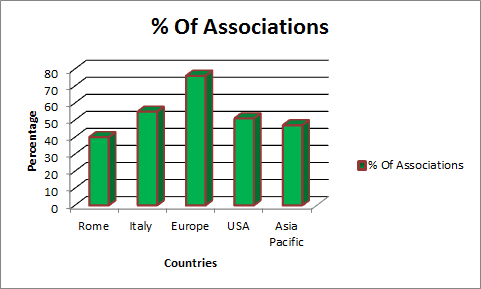
Major Universities on Infection Prevention Research
Anahuac University North Campus, Mexico
Australian National University, Australia
Benha University, Egypt
Birmingham City University, UK
Center for Clinical Pharmacology, Belgium
Charles Darwin University Casoria Australia
Columbia University Medical Center, United States
Curtin University Bentley, Australia
Dar Al Uloom University, Saudi Arabia
Duke University, USA
Emory University, USA
GMEC, The Global Medical Excellence Cluster
Guangzhou Medical University, China
Guangzhou Medical University, China
Harvard University, United States
Harvard University, USA
Imperial College London, United Kingdom
Iqbal Chest Centre, Bangladesh
John Hopkins University, USA
Johns Hopkins University, United States
Karolinska University, Sweden
Kindai University, Japan
King Saud Bin Abdulaziz University, Saudi Arabia
King's College London, UK
Kumamoto University, Japan
Linnaeus University, Sweden
Macquarie University, Australia
Mayo Clinic College of Medicine, USA
McGill university Montréal, Canada
McMaster University, Canada
Medi7 Bentleigh, Australia
Murdoch University Murdoch, Australia
National Institutes of Health, USA
Newcastle University, Australia
Northwestern University, Qatar
Osaka University, Japan
Oxford University, UK
Philip Morris International R&D, Switzerland
Pompeu Fabra University, Spain
Queen Mary University, UK
Radboud University Medical Center, Netherlands
Rare Genomics Institute, USA
Research Institute of Hospital del Mar, Spain
Samsung Medical Center, South Korea
St George’s University of London, UK
St. George Hospital, Australia
Stanford University, USA
Tasmanian Health Service, Australia
The Chest & Heart Association of Bangladesh, Bangladesh
The Fourth Hospital of Harbin Medical University, China
The Jikei University School of Medicine, Japan
The University of Newcastle, Australia
Tufts university, United States
United Hospital, Bangladesh
University College London, UK
University of British Columbia, Canada
University of Buffalo, United States
University of California Los Angeles, United States
University of California, USA
University of Cambridge, USA
University of Canberra Bruce, Australia
University of Celiac Disease Center, USA
University Of Chicago Medicine, USA
University Of Colorado, USA
University Of Groningen, Netherlands
University of Lincoln, UK
University Of London Imperial College Of Science Technology And Medicine, UK
University of Maastricht, Netherlands
University Of Maryland Medical Center, Australia
University Of Maryland Medical Center, United States
University Of Melbourne, Australia
University Of Minnesota, United States
University of Newcastle, Australia
University of Pennsylvania, USA
University of Pittsburgh Study
University of Pittsburgh, USA
University of Queensland, Australia
University of Tasmania, Australia
University of Toronto, Canada
University of Valencia, Spain
University of Washington, USA
University of Washington, USA
University of Zurich, Switzerland
University-of-the-sunshine-coast, Australia
Weill Cornell Medical College, Qatar
Wits University, South Africa
Yale University School of Medicine, USA
Yonsei University, South Korea

Major Companies Associated with Infection Prevention Research
Abbott Laboratories, UK
Actavis, USA
Aegerion Pharmaceuticals, Japan
Alexion Pharmaceuticals Inc, Switzerland
Almirall, Spain
Amgen, USA
Amphastar Pharmaceuticals, Inc
Araim Pharmaceuticals
Astellas Pharma US
AstraZeneca, Switzerland
AstraZeneca, UK
Baxter International Deerfield
Bayer HealthCare, Germany
Bayer, Germany
Beacon Pharmaceuticals, Bangladesh
Biotie Therapies Corp, Finland
Bioxyne Limited, Australia
Boehringer Ingelheim, Germany
Celgene, Switzerland
Centrapharm Ltd, UK
Cohero Health, USA
Daiichi Sankyo Europe, Germany
Daiichi Sankyo, Japan
Dohmen Life Science
European Medicines Agency
Forest Laboratories, USA
Gecko Health, USA
Generics (UK) Ltd, UK
Genus Oncology Vernon Hills, USA
Genzyme, USA
Gilead sciences, USA
GlaxoSmithKline, UK
Global Data, UK
Gsk, London
Hormosan Pharma, Germany
Ikris Pharma Network Pvt Ltd, India
Kissei Pharmaceutical Co., Ltd, Japan
Kyowa Hakko Kirin Co. Ltd, Japan
Lallemand Pharma, Switzerland
Marathon Pharmaceuticals
Merck & Co, USA
Millennium Pharmaceuticals
Napp Pharmaceuticals Ltd, UK
Novartis, Switzerland
NPS Pharmaceuticals
Octapharma, USA
Onyx Pharmaceuticals, USA
Otsuka Holdings Co., Ltd, Japan
Panmira Pharmaceuticals, LLC, USA
Pearl Therapeutics, Inc
PharmaMar, USA
Prosensa, Netherlands
PT Boehringer Ingelheim, Indonesia
Queensland Respiratory Laboratory Pty. Ltd, Australia
Ranbaxy Laboratories Limited
Raptor Therapeutics
Roche, Switzerland
Sanofi, France
Sarepta Therapeutics, USA
Sigma-Tau Pharmaceuticals, Italy
Swedish Orphan Biovitrum AB, Sweden
Takeda, Japan
TriStem Corp Ltd, UK
Vertex Pharmaceuticals, USA
ViroPharma
ViroPharma, USA
Visionary Pharmaceuticals, Inc, USA
Yungjin Pharm Ind. Co., Ltd, South Korea
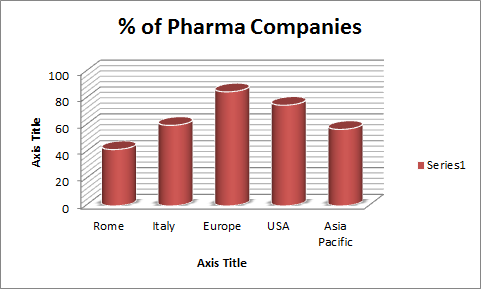
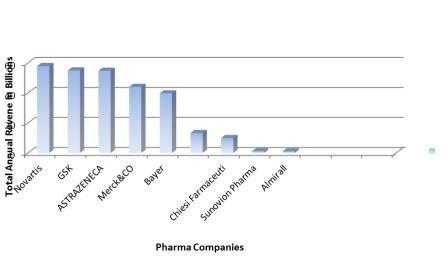
Market Research on Infection Prevention
This report studied the global infection control market during the forecast period of 2016 to 2021. The global infection control market is expected to grow at a CAGR of 6.5% during the forecast period, to reach USD 17.78 Billion by 2021. Growth in this market is attributed to factors such as rising incidence of hospital acquired infections (HAIs), growth in the number of surgical procedures, aging population, and rising focus on the need of food sterilization and disinfection. On the basis of region, the infection control market is broadly segmented into North America, Europe, Asia-Pacific, Latin America, and Middle East and Africa. Rise in pandemic diseases such as H1N1 flu, bird flu, natural disasters, and rising aging population with the resultant increase in the number of chronic disease cases, along with rise in nosocomial infections and surgical site infections have boosted the growth of the infection control markets in North America and Europe. However, Asia-Pacific region is expected to grow at the highest CAGR, owing to rising incidences of HAIs and increasing medical tourism in emerging countries such as China and India.
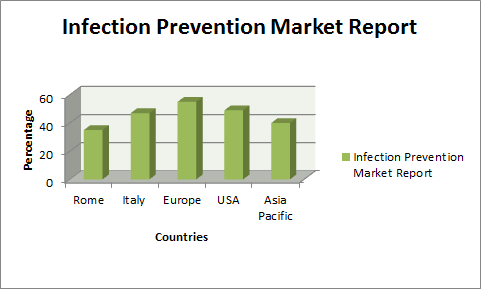
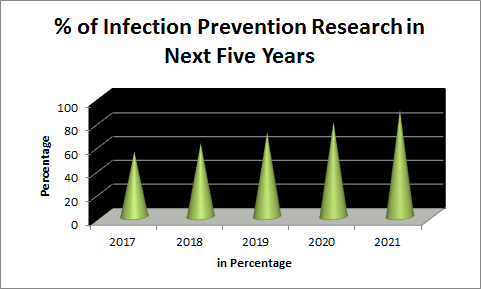
BD is a global medical technology company that is advancing the world of health by improving medical discovery, diagnostics and the delivery of care. We lead in patient and healthcare worker safety, and technologies that enable medical research and clinical laboratories. Our innovative solutions help advance medical research and genomics, enhance the diagnosis of infectious disease and cancer, improve medication management, promote infection prevention, equip surgical and interventional procedures, optimize respiratory care and support the management of diabetes.BD partners with organizations around the world to address some of the most challenging global health issues. Our nearly 50,000 associates across 50 countries closely collaborate with customers and partners to help enhance patient outcomes, lower healthcare delivery costs, increase operational efficiencies and expand access to healthcare.
Our state-of-the-art facilities around the globe provide an environment that enables our highly talented and passionate workforce to be the best at their professions. We are always seeking great people to join our company on its journey to greatness.
Conference Highlights
- Infection Prevention, Control and Cure
- Infection Control Procedures
- Immunizations
- Hospital Infections and Epidemiology
- Microbial Pathogenesis and Virulence
- Infection Control in Critical Care
- Infection Control in Dialysis
- Blood Borne and Exposure Control
- Antimicrobial Chemo Thearpy
- Infection Associated with Intra Vascular Therapy
- Infection Associated with Urethral Catheters
- Respiratory Tract Infection Therapy
- Preventing Gastrointestinal Infection
- Infection Control in Clinical Practice
- Micro Organisms and Their Control
- Disinfection and Sterilization
- Infection Control Nursing
- Infection Control Risk Assessment
- Emerging and Re-Emerging Infections
- Plant Pathology and Diseases Control
- Infection Control for Veterinary Practices
- Personal Hygiene Practices
- Hospital Infections and Epidemiology
To share your views and research, please click here to register for the Conference.
To Collaborate Scientific Professionals around the World
| Conference Date | December 14-07, 2018 | ||
| Sponsors & Exhibitors |
|
||
| Speaker Opportunity Closed | Day 1 | Day 2 | |
| Poster Opportunity Closed | Click Here to View | ||
Useful Links
Special Issues
All accepted abstracts will be published in respective Our International Journals.
- Journal of Infectious Diseases and Therapy
- Air and Water Borne Diseases
- Journal of Bacteriology and Parasitology
Abstracts will be provided with Digital Object Identifier by




